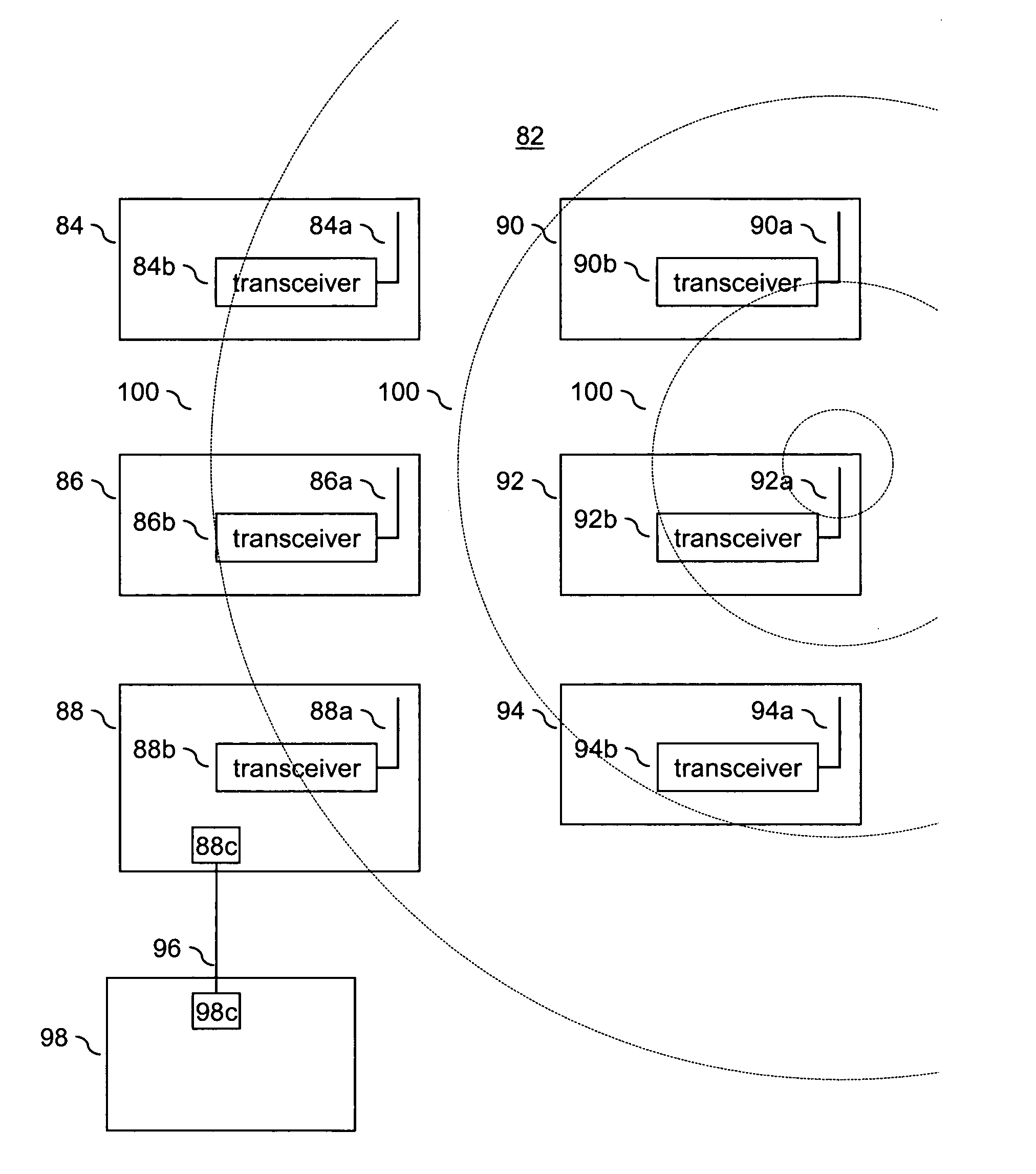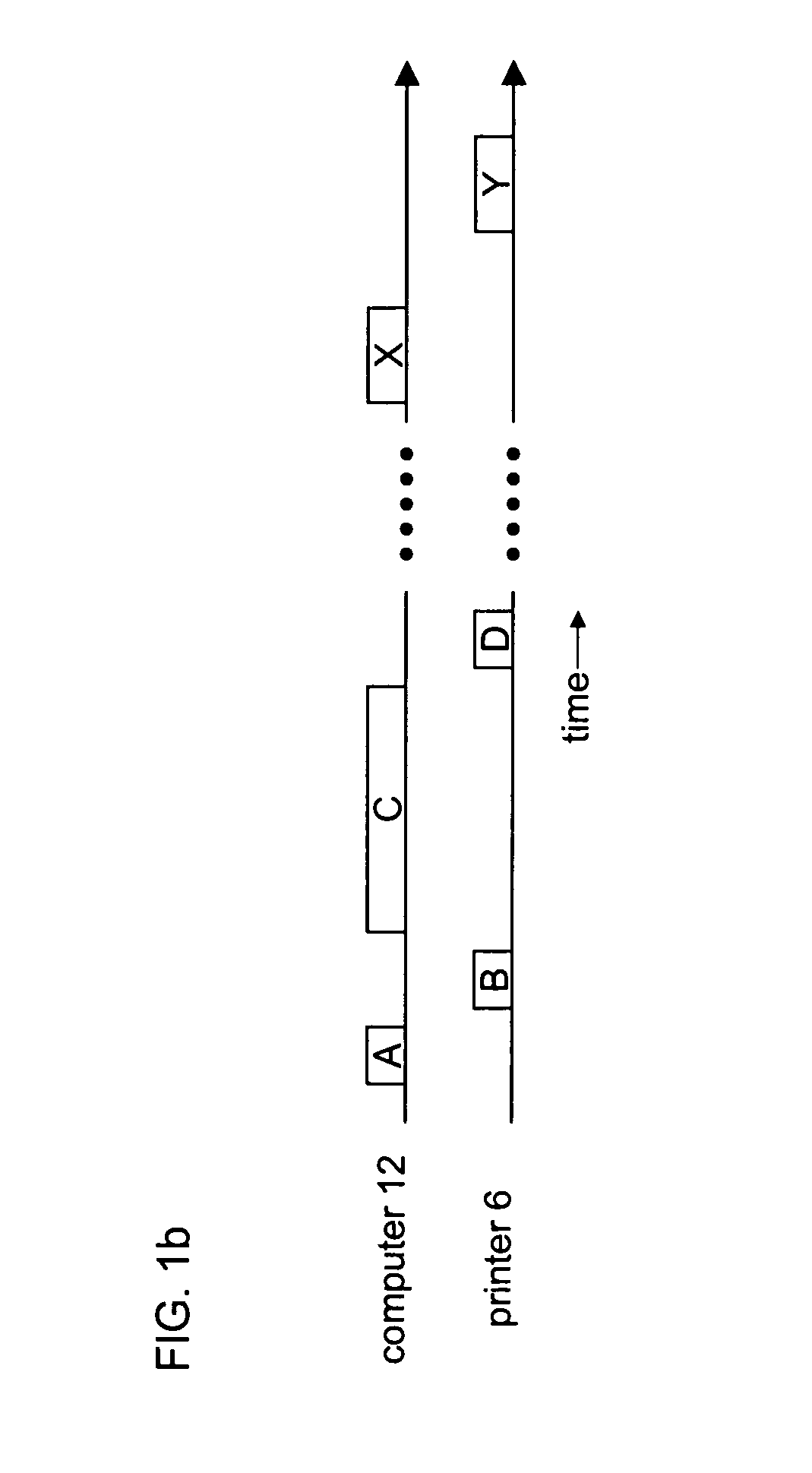Protocol for improved utilization of a wireless network using interference estimation
a technology of interference estimation and wireless network, applied in the field of wireless communication, can solve problems such as reducing the rate at which data can flow through the network
- Summary
- Abstract
- Description
- Claims
- Application Information
AI Technical Summary
Benefits of technology
Problems solved by technology
Method used
Image
Examples
Embodiment Construction
[0037]The present invention is an improved method of operating a wireless station in a wireless network, which can also be referred to as a protocol. The related paper “Location Enhancement to 802.11 DCF” by T. Nadeem, L. Ji, A. Agrawala, and J. Agre, published in IEEE 2005 Infocom, March 2005, Miami, Fla., is hereby incorporated by reference. As the present invention takes the capture effects of a transceiver into consideration, it is appropriate to begin by explaining this phenomenon.
[0038]FIG. 5a shows a local wireless station, 150, which is within range of first and second remote wireless stations (not shown). In FIG. 5a, the first remote station is transmitting a signal, 152, carrying a frame addressed to the local station. FIG. 5b illustrates the situation where the second remote station begins transmitting concurrently with the first remote station. Now local station 150 hears two signals, signal 152 from the first remote station and signal 162 from the second remote station....
PUM
 Login to View More
Login to View More Abstract
Description
Claims
Application Information
 Login to View More
Login to View More - R&D
- Intellectual Property
- Life Sciences
- Materials
- Tech Scout
- Unparalleled Data Quality
- Higher Quality Content
- 60% Fewer Hallucinations
Browse by: Latest US Patents, China's latest patents, Technical Efficacy Thesaurus, Application Domain, Technology Topic, Popular Technical Reports.
© 2025 PatSnap. All rights reserved.Legal|Privacy policy|Modern Slavery Act Transparency Statement|Sitemap|About US| Contact US: help@patsnap.com



